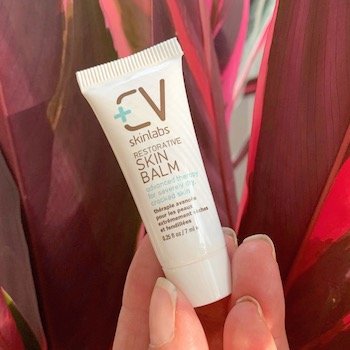
The surgery is over, but now how do you get rid of that scar tissue?
We’re here to help.
Scar Tissue After Surgery—Why Does It Form?
After any type of procedure where the skin and the tissues underneath it are cut open, the body has to undergo a healing process. This process is quite amazing as the body can create new cells to replace the ones that were damaged, forming a strong mesh over the damaged area and gradually closing the hole that was created by the cut.
Unfortunately, the new skin is rarely as smooth and flawless as the old skin was. After a trauma like surgery, the collagen cells—which provide the framework and strength for the new skin—clump together abnormally, forming what you see as scar tissue.
I Want to Know How to Get Rid of Scar Tissue Because It Hurts!
We don’t usually think about scar tissue as being painful, but because of the clumped collagen fibers, it is typically a lot less flexible than your original skin. This means that as it forms, it can become tight, limit your movement, and sometimes, cause pain.
Depending on where the scar is, it may pull on other nearby areas, restrict muscle and connective tissue, and compress nerves, blood vessels, and organs. All of these effects can cause varying degrees of discomfort.
How to Get Rid of Scar Tissue Before It Forms
Your best chance at getting rid of scar tissue is to prevent it from forming in the first place. As you’re recovering from your surgery, try these tips to help your body form new tissue that is flexible and soft.
1. Follow your doctor’s instructions on taping.
Proper taping can help reduce the risk of the scar growing in size, and help keep it still so that it heals better. Make sure you know how to apply the tape correctly and minimize any further irritation to the area.
2. Try silicone sheets or roles.
You can find these in the first aid department of your local drug store. Simply cut a piece that will fit over the affected area. Leave on for as long as instructed, then remove before washing or wetting the area.
Silicone gel helps disrupt the formation of scars by keeping the area hydrated, reducing collagen production, balancing growth factors, and protecting from bacteria.
 3. Moisturize, moisturize.
3. Moisturize, moisturize.
In addition to silicone sheets, it’s also important to keep the scar moisturized. As soon as you are able, begin applying a nourishing balm to the area to keep it soft and pliable.
We recommend our Restorative Skin Balm, a petroleum-free salve that coats the skin and provides a soothing barrier to trap moisture.
It also contains a powerful combination of anti-inflammatory and wound-healing ingredients that help encourage repair.
4. Try manual therapy to break up scar tissue.
It may seem overly simplistic to say, “massage your scar,” but in truth, it can help. Any type of manual manipulation can prevent tissue restriction and re-organize the collagen fibers before they mature and set themselves permanently.
Timing is critical here. You don’t want to move your scar around until it’s completely closed as you don’t want to re-open the wound. Once your doctor says it’s okay, spend some time each day applying gentle force in the right direction on your skin. Press and push in the direction that you want the scar to grow for a few minutes each day.
It helps to apply moisturizer first. You can use our Restorative Skin Balm, Calming Moisture, or Body Repair Lotion so that your fingers slide smoothly over the skin. These products will also help hydrate and nourish the skin.
5. Take care of yourself.
Try to eat a healthy diet, get enough sleep, avoid smoking, and take daily walks to keep your body in good shape. The healthier you are overall, the better your skin will heal. Avoid dehydrating alcoholic beverages and drink water regularly.
6. Stay out of the sun.
The sun can quickly damage those new skin cells that are trying to form over your wound, inhibiting healing, and it can also darken a scar and make it more noticeable. Always protect your scars from the sun.
How to Get Rid of Scar Tissue Once It Forms
It is difficult to get rid of scar tissue completely, but you can take steps to minimize its appearance and to make it more comfortable.
1. Scar tissue massage
Anytime within the first two years of the scar’s formation, massage and manual manipulation can help. So as noted above, simply spend a few minutes each day massaging the area in a circular motion around the scar. It will help improve blood flow to the area, increase range of motion, reduce swelling, and help reduce scar tissue buildup.
2. Laser treatment for surgical scars
Laser treatment uses focused light therapy to help reduce the appearance of scars. It won’t completely remove a scar, but it can significantly minimize its appearance and thickness. Talk to your dermatologist. Sometimes multiple treatments are needed.
3. Microneedling for surgical scars
In this process, the technician uses a tool that delivers many very small, fine needles into the affected area. These needles create tiny wounds in the skin that stimulate additional healing. Again, multiple treatments may be needed. It won’t completely erase the scar, but it can help break it up, improve the texture, and increase flexibility.
 4. Advanced skin care solutions
4. Advanced skin care solutions
Studies have shown that silicone gel products, as mentioned above, are effective at treating and preventing the formation of scars, as well as improving mature scars. In a 2020 review, researchers found that silicone gel sheets and silicone gels improved scar outcomes.
Skin care products that contain vitamin E, natural butters and oils, and anti-inflammatories can help to heal scars while relieving itch and pain. Again, we recommend our Restorative Skin Balm. It contains vitamin E, castor oil, and beeswax which all help moisturize the area and improve flexibility. Shea butter and almond oil go deep into the skin to moisturize the lower layers, while our exclusive Tri-Rescue Complex helps tame inflammation and encourage healing.
5. Sun protection
Your scar will be more sensitive to the sun than your regular skin. It is more likely to darken when exposed to the sun, even after it’s completely healed. Keep applying sunscreen to the area for at least two years to reduce the risk of hyperpigmentation.
6. Physical therapy
If your scars are affecting your movement—if they are right and limiting your range of motion—a series of stretches and exercises can help to gradually break them down so that you can be more mobile again. This is particularly helpful for scars on the back, abdomen, and limbs. Talk to your doctor.
7. Scar revision surgery
If the scar is particularly deep and painful, scar revision surgery can help. This is usually reserved as a last resort.
How do you manage scars after surgery?
Photo by Andrea Piacquadio from Pexels.

